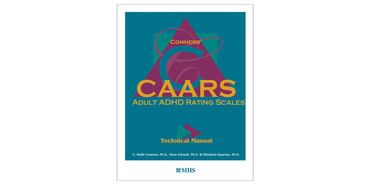Conners' Adult ADHD Rating Scales (CAARS) is a multidimensional assessment of adult ADHD
Conners' Adult ADHD Rating Scales
CAARS
Conners' Adult ADHD Rating Scales (CAARS) is a multidimensional assessment of adult ADHDChoose from our formats
Test forms & reports
Booklets, record forms, answer sheets, report usages & subscriptions
6 options
Support materials
Manuals, stimulus books, replacement items & other materials
1 option
All products
All tests and materials offered for CAARS
7 options